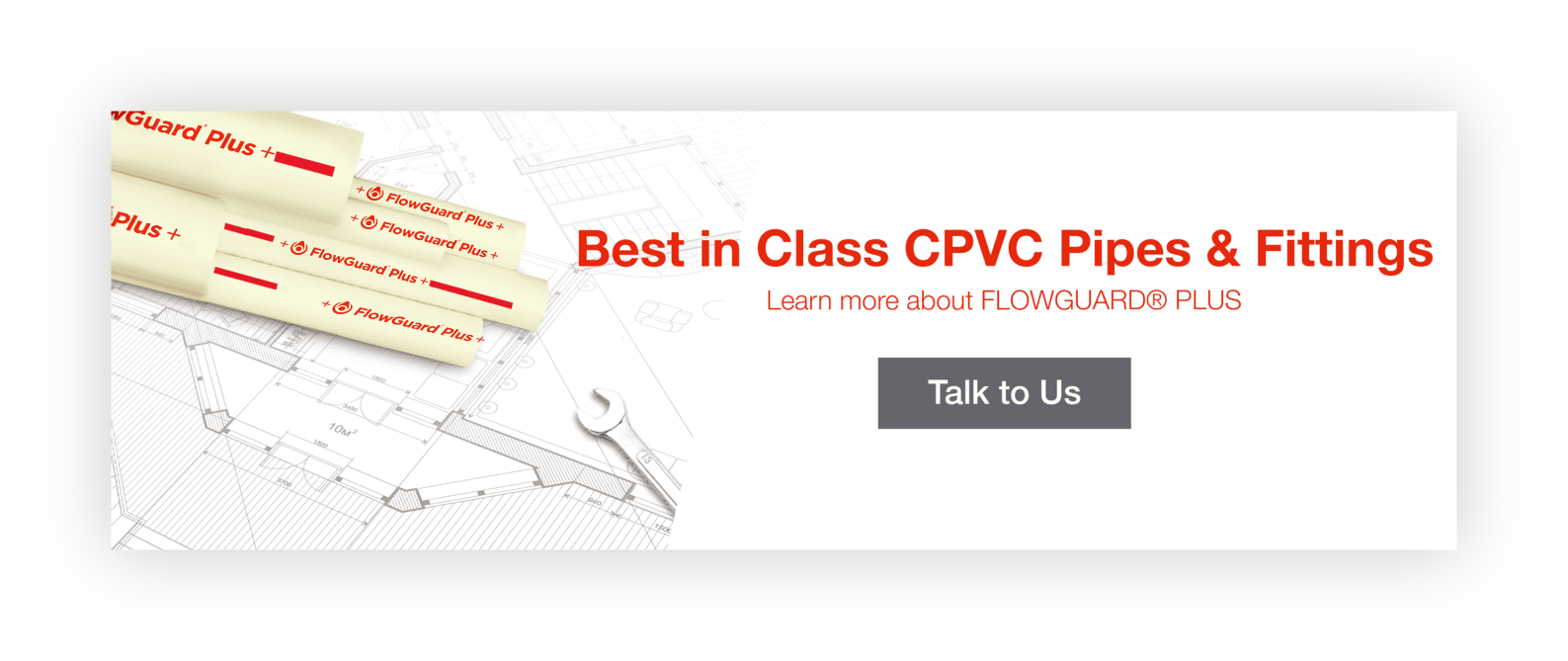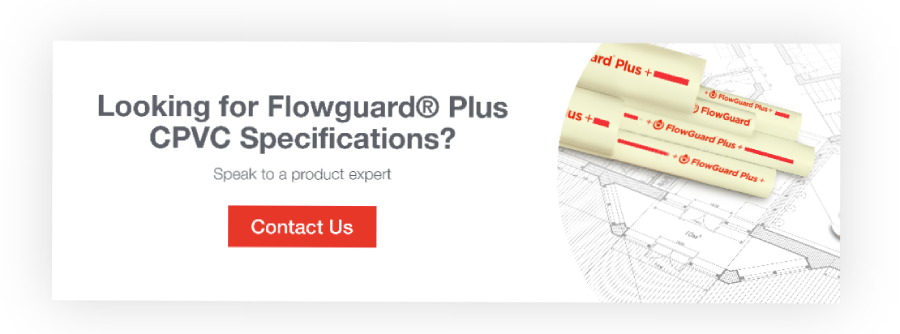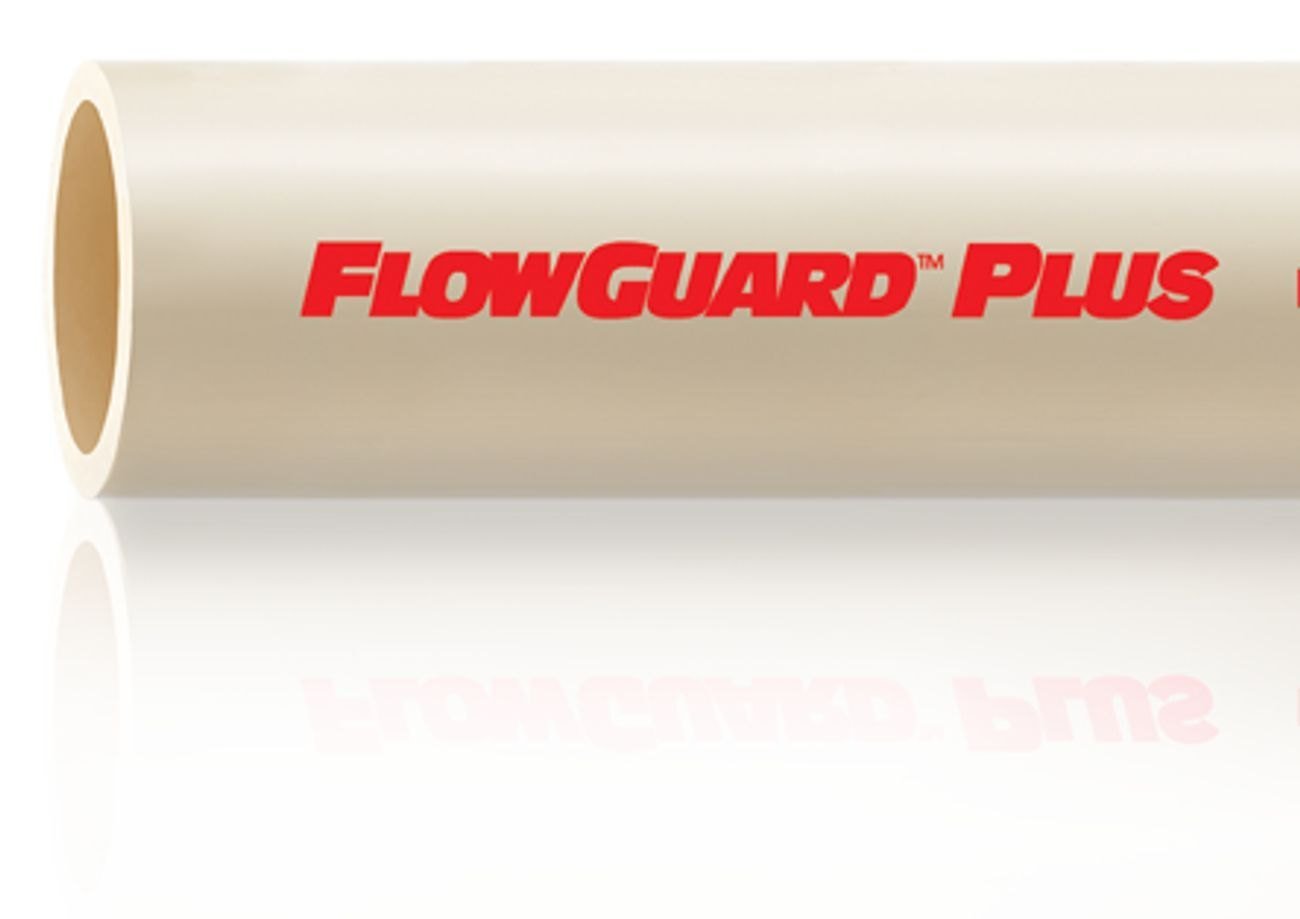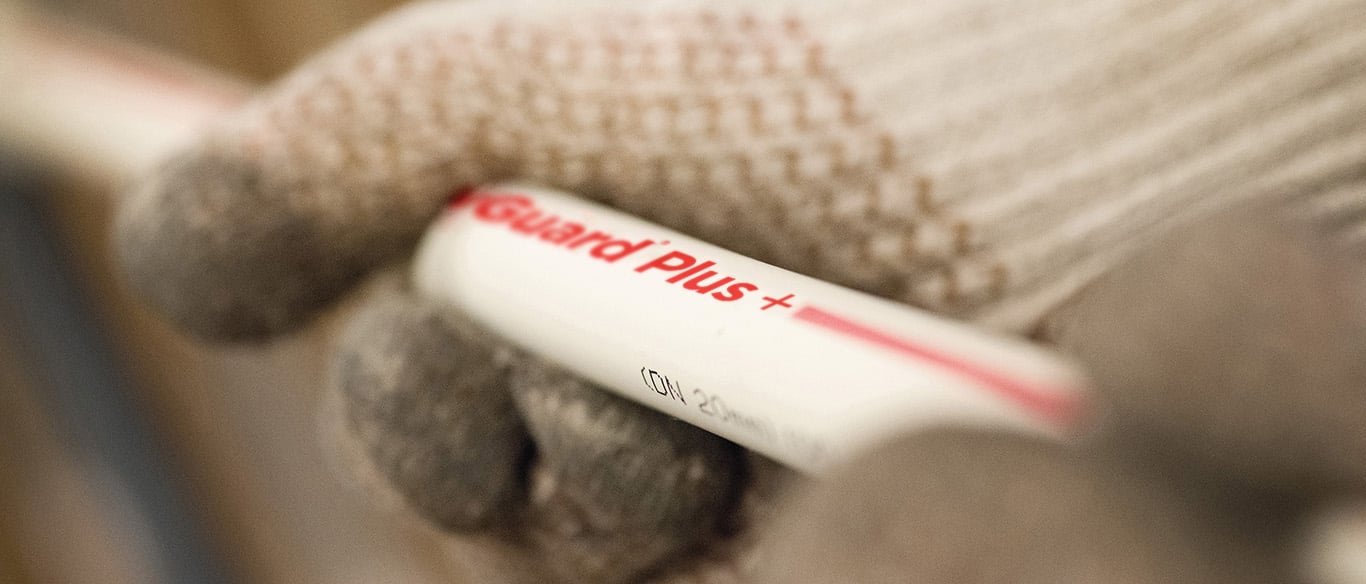
Debunking the Myths about FlowGuard® Plus CPVC Pipe Fittings
Installation | Health and Safety | on May 17th, 2019
Introduction
FlowGuard® CPVC Fittings and pipes are made out of CPVC, or chlorinated polyvinyl chloride. This durable thermoplastic material is trusted by homeowners and all leading plumbing professionals around the world, and has been successfully used in plumbing systems for more than 55 years & in India for more than 17 years. Working closely with various plumbing professionals in projects (Builders / Plumbing Consultants / Architects / Plumbing Engineers / contractors) and in Retail Distribution (Distributors / Dealers / Retailers) through the years, we’ve encountered a few misconceptions about CPVC fittings and FlowGuard piping. In this guide, we debunk these myths and explain why more and more plumbing professionals are relying on CPVC pipes for hot and cold-water plumbing systems, & why in India today FlowGuard CPVC is the 1st choice for Hot & Cold-Water plumbing systems in all leading projects.
MYTH: CPVC JOINTS ARE LIKELY TO FAIL.
FACT: CPVC fittings and pipe joints are the strongest part of the system. FlowGuard CPVC Fittings and Pipes are joined using a simple solvent cement process, which is also known as Cold Welding process. Solvent cement is not a glue. Instead, it chemically fuses the material at the molecular level, creating a complete homogeneous fixture. (Double Layered Surfaces)
If a CPVC joint fails, it is almost always a result of an improper connection / application, or cheap, poor quality material. (Lot of inferior quality solvent cements are available in market which are not as per quality of FG Solvent Cement) FlowGuard CPVC, as the worldwide leader in CPVC technology, is subjected to stringent quality control measures throughout the manufacturing process, ensuring reliable piping material.
When solvent cement is applied to the outer layer of pipe & inner layer of fittings, the solvent softens the outer layer of material, which enables it to fuse itself with its adjoining piece at the molecular level.
MYTH: CPVC IS UNSAFE FOR DRINKING WATER.
FACT: FlowGuard CPVC is the safest piping material available. All major international public health agencies, including NSF International, ASTM International, Kiwa and the Water Regulation Advisory Scheme (WRAS), have approved FlowGuard CPVC for safe use in potable water systems.
- Unlike green pipe (PPR), FlowGuard CPVC is the only piping material that has the NSF-61 Annex G certification.
- FlowGuard CPVC does not contain any plasticizers, flame retardants, bio-stabilizers, and anti-static agents.
- Research from Virginia Tech shows that CPVC materials do not affect drinking water taste or odor.
- FlowGuard CPVC systems keep water clean and help prevent bacterial growth caused by biofilm formation.
Multiple studies, including the Kiwa Water Assessment, have confirmed FlowGuard CPVC does not contribute harmful contaminants to drinking water.
- In India FlowGuard Pipes are also approved by BIS and the code is IS : 15778 Chlorinated Polyvinyl Chloride pipes for Hot & Cold Potable water distribution supplies.
- CPWD has also included CPVC in Water supplies item in DSR 2007.
MYTH: CPVC HAS A SHORT SERVICE LIFE.
FACT: CPVC piping systems installed more than 55 years ago are still performing around the world. In India FlowGuard CPVC is introduced since last 17 years and today has become the 1st choice for all for Hot & Cold Water Plumbing System to all plumbing professionals.
- FlowGuard CPVC is resistant to chlorine-based disinfectants. Unlike green pipe (PPR), FlowGuard CPVC is resistant to the additives used to keep our drinking water safe, including chlorine and chlorine dioxide. These common household cleaners can be used safely with FlowGuard CPVC —chlorine dioxide causes pipe failure in PPR systems.
Chlorine Resistance Testing: CPVC vs. PPR

The CPVC pipes on the left was installed in the 1960’s. After 23 years of installation FlowGuard CPVC did not show any signs of damage to the material or reduction of the internal diameter. The green (PPR) pipe on the right was tested in accordance with NSF P-171 (Protocol for Chlorine Resistance of Plastic Piping Materials) and showed significant signs of pipe wall erosion after only 9 and a half months.
MYTH: CPVC PIPES ARE NOT SAFE FOR DRINKING WATER
FACT: Piping material is one of the top reasons that contaminate the drinking water with harmful bacterias, fungi and algae.
Several international studies such as the KIWA Water Assessment, tested the safety of several materials, including green pipe (PPR) and chlorinated polyvinyl chloride (CPVC) and found that CPVC is one of the safest non-metallic materials for water supplies.
The reason why FlowGuard® Plus CPVC pipes are the safest pipes for drinking water is that the materials that are used in the creation of CPVC prevent biofilm formation on the pipes.
Biofilms include, bacteria, fungi, mold and algae.
MYTH: GREEN PIPE (PPR) IS BETTER THAN CPVC BECAUSE IT’S NEWER.
FACT: CPVC is the dominant piping material throughout India , and FlowGuard CPVC is the most popular & trusted used brand. Builders, MEP Consultants, Architects, Plumbing Contractors and plumbers prefer FlowGuard CPVC over PPR because of the following:
- Fire resistance: FlowGuard CPVC is self-extinguishing and does not support combustion—meaning it won’t spread a fire like other plastics that continue to burn after exposed to flame.
LOI (Limiting oxygen Index) is defined as the amount of oxygen required by an item to burn in atmosphere. For CPVC the LOI is 60 and hence CPVC does not support combustion. Pipe PPR: The LOI is 18 and hence it not only supports combustion but it drips fire adding to the fire load of the building.

Effect of Disinfectant on the Material
- Effect of disinfectant on the material - CPVC has been in use in USA since the last 50 years and USA use Chlorine as a disinfectant for water purification. In India we also follow Chlorine as a disinfectant for mass water purification. CPVC technology was invented in USA and it has been working well in all countries using chlorine / Ozone etc.
- PPR is a Polyolefin based plastic and studies done by a number of independent test institution have generated data which demonstrates without doubt that small quantities of chlorine exhibit a strong oxidizing effect on polyolefins pipe (PB, PE- AL-PE , PPR, PEX ) resulting in a significant reduction of the expected life time.
- Hence countries like USA came up with an American Standard i.e. •NSF p 171 Protocol for Chlorine Resistance of Plastic Piping Materials and ASTM F-2023-04 to counter this problem.
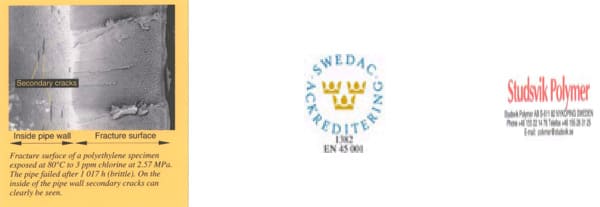
Leading Pipe testing Lab of the World Proved the Chlorine failure Mechanism Of Polyofiens (PP, PEX, PB, PE-Al-PE)
UV Stability (For External Exposed Piping)
CPVC
The main degradation process is dehydrochlorination, not oxidation. This dehydrochlorination, whilst slightly accelerated by U.V., does not break down the polymer chains to any significant extent after outdoor exposure, being mainly limited to a surface discoloration effect.
- No significant loss in pressure bearing capability
- 55 years of outside service in Southern California & 17+ years trouble free installations in India.
Polyethylene, Polypropylene
U.V. acts as a strong catalyst for the oxidation process which breaks down polymer chain, leading to weakness in pipe and loss of hydrostatic strength.
PPR manufacturers have different UV protect covering on the pipes which are more expensive than the regular piping and alternatively they recommend encasing of the PPR pipes in a thin layer of PVC pipe to protect against UV radiation.
Ease of Installation & Reparability
CPVC uses a simple, solvent cement jointing method commonly known as Cold Fusion. Tools required are very simple and inexpensive. Installation is easy in tight, confined or inaccessible places.
The basic installation procedure is the same as that for PVC – known and used by virtually all plumbers.
Reparability: Very easy, without need of any special equipment.
Authenticity of the Joint: solvent cement joining is not an adhesive joining but is the cold fusion in which the solvent cement melts the top of the pipe and the inside of the fitting which then fuse into each other forming a monolithic seamless joint.

Solvent Cement Application and Joining Procedure - Cut out of the joint
PPR uses Heat Fusion method. A heating device is required and source of electricity is a must.
Note: It has been observed even in the best of installations of PPR that due to some leniency from the end of the plumbers a bead formation takes place reducing the Inner Diameter of the fitting resulting in pressure loss. At many sites it has been observed that there is total blockage in the fitting due to improper installation which is very difficult to detect and hence the complete bathroom has to be ripped open to locate the faulty joint.

Imagine Loss of pressure if there are only 10-15 faulty joints in a bathroom having more than 70 joints.

Binay Agrawal
Binay Agrawal, a highly experienced and accomplished professional, currently holds the position of Business Head of the TempRite South Asia division at Lubrizol India.

